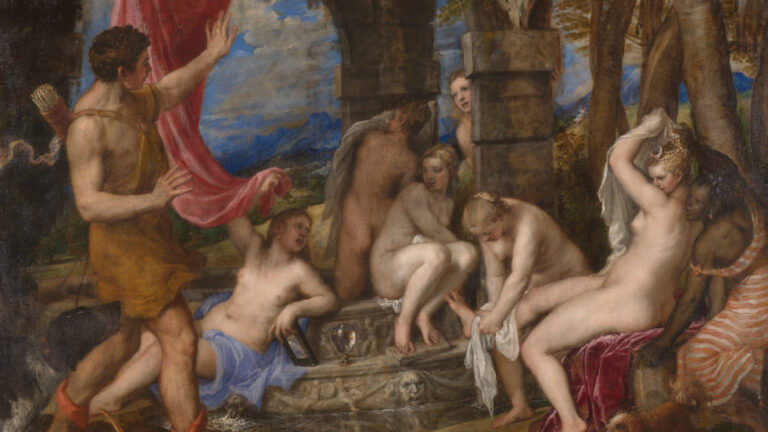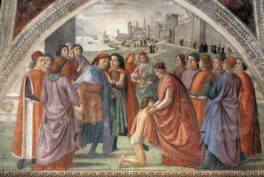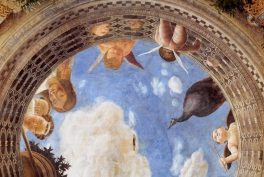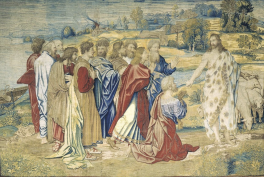In a series of articles we are meeting each of the seven Poesies, which Titian delivered Phillip II of Spain in the 1550s and early 1560s. So far we have encountered the stories of Danaë, Venus and Adonis, Perseus and Andromeda, and The Rape of Europa. Every painting-poem translated a small section of the Epic poem Metamorphoses, by the Roman poet Ovid. Today’s Poesie, and the next and the last, all revolve around stories about the goddess Diana. First up, Actaeon:
Beware: do not look at naked Diana!
“While Diana is bathing there, in her accustomed place, Cadmus’s grandson, free of his share of the labour, strays with aimless steps through the strange wood, and enters the sacred grove. So the fates would have it.”
Ovid, Metamorphoses, III.173-176

Diana is on the right-hand side; she is wearing a half-moon diadem and sitting on some luxurious velvet whilst having her feet washed. She shields her naked body from Actaeon. Titian makes her anger clear and contrasts it with the concerned expression of the nymph closest to the blundering intruder. The pool of water is still and reflective but not for long, as the goddess splashes it into Actaeon’s face: The skull foreshadows the outcome because the splash transforms Actaeon into a stag and he will then be ripped apart by his own hunting-dogs.
The Irony
Unlike the preceding scenes this Poesie shows both a male victim and multiple female nudes, rather than just one. Like Adonis, Actaeon is an unlucky hunter, but unlike Adonis he does not find favour with a goddess.
Diana and Actaeon showcases Titian’s dexterity at composing the female nude. This is ironic considering that the painting tells a story where a viewer is punished for seeing nudity.
Titian’s Poesies – A Series
Be sure not to miss reading about Diana and Callisto, a twin to our painting. And find out about the previous Poesies too: Danaë (1549-50), Venus and Adonis (1554), Perseus and Andromeda (1556) and The Rape of Europa (1560-2).
Four things to look out for in the Poesies
1. The female nude, which would be hard to miss.
These famous paintings achieve many things, not least their depictions of the female nude from all possible angles.
2. D-R-A-M-A, again, hard to miss.
Their greatest feat however is the way Titian captures the drama of the stories from Metamorphoses. Each Poesie focuses on the moment just before the climax. They are incredible to behold even if you don’t know the myth behind them and can even captivate and engage the most astute viewer because of their specificity to the Ovidian poem.
3. Pairings.
They’re marvelous as stand-alone paintings, in pairs and as a set. Taken as duos the paintings often mirror each other visually.
4. Drapery, dogs and dead-pan stares.
As a set the Poesies offer coherent motifs, such as the dogs, the red drapery, and the power play of the gaze.




